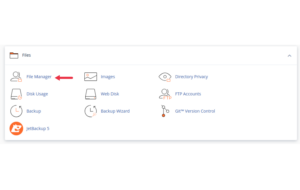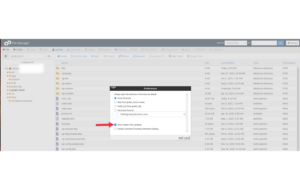If you’re running a website on cPanel hosting, securing your connection with HTTPS is one of the easiest yet most important steps you can take. HTTPS not only protects your visitors’ data with encryption, but also boosts SEO rankings and avoids “Not Secure” browser warnings.
The best way to force HTTPS on every page of your site is by updating your .htaccess file and you can do this directly from your cPanel dashboard, without needing advanced technical skills.
In this article, you’ll learn exactly how to do it safely, step by step.
Why Force HTTPS?
Even if you’ve installed an SSL certificate, your website may still be accessible through both http:// and https://. That’s a problem because:
-
Users may land on the non-secure version
-
You might face SEO duplication issues
-
Login forms or contact pages may send data without encryption
By forcing HTTPS, you ensure all visitors are automatically redirected to the secure version of your site no matter what URL they use.
Step-by-Step: How to Force HTTPS via .htaccess in cPanel
Step 1: Log In to cPanel
Start by accessing your hosting account and logging into cPanel. The URL typically looks like:
https://yourdomain.com/cpanel
Use the credentials provided by your hosting provider.
Step 2: Open File Manager
Once inside cPanel:
-
Scroll to the Files section

-
Click on File Manager
This opens a browser-based file editor for your entire website.
Step 3: Show Hidden Files (if needed)
By default, .htaccess is a hidden file. To view it:
-
Click Settings in the top-right corner of File Manager

-
Check “Show Hidden Files (dotfiles)”

-
Click Save
Now you should see .htaccess in the public_html/ directory (or your domain’s root folder).
Step 4: Backup Your Existing .htaccess
Before making any changes:
-
Right-click the
.htaccessfile -
Click Download to save a local backup
This ensures you can recover your website in case something goes wrong.
Step 5: Edit the .htaccess File
Now, right-click .htaccess and choose Edit.
A new tab will open with a plain-text editor. Scroll to the top and insert the following code:
Explanation:
-
RewriteEngine On: Enables URL rewriting -
RewriteCond %{HTTPS} off: Checks if the request is not using HTTPS -
RewriteRule: Redirects all requests to HTTPS using a 301 (permanent) redirect
Make sure this goes above the WordPress permalink block if you have one.
Step 6: Save and Test
Click Save Changes at the top-right of the editor.
Then open your website in a new browser window and try typing:
You should be redirected automatically to:
https://yourdomain.com
Test multiple internal pages as well to confirm everything is loading securely.
Common Issues (and How to Fix Them)
| Issue | Solution |
|---|---|
| Site not loading after update | Restore your .htaccess backup |
| Redirect loop (too many redirects) | You may already have HTTPS rules elsewhere (plugin, CMS) |
| HTTPS still not working | Ensure your SSL certificate is installed and valid |
Additional Tip: Check SSL Certificate First
For HTTPS to work, you must already have a valid SSL certificate installed.
To check:
-
In cPanel, go to SSL/TLS Status
-
Look for green padlocks next to your domain
If your domain doesn’t have an SSL installed, use AutoSSL or ask your host to enable Let’s Encrypt SSL (usually free).
Final Thoughts
Forcing HTTPS isn’t just a nice-to-have it’s a must-do for website security, SEO, and trust.
Thanks to cPanel’s File Manager and a few lines of .htaccess code, you can redirect all traffic to HTTPS in under 5 minutes. Just remember to back up before editing, and your site will be secure, professional, and fully optimized for modern browsers.





 ajith
ajith  June 21, 2025
June 21, 2025